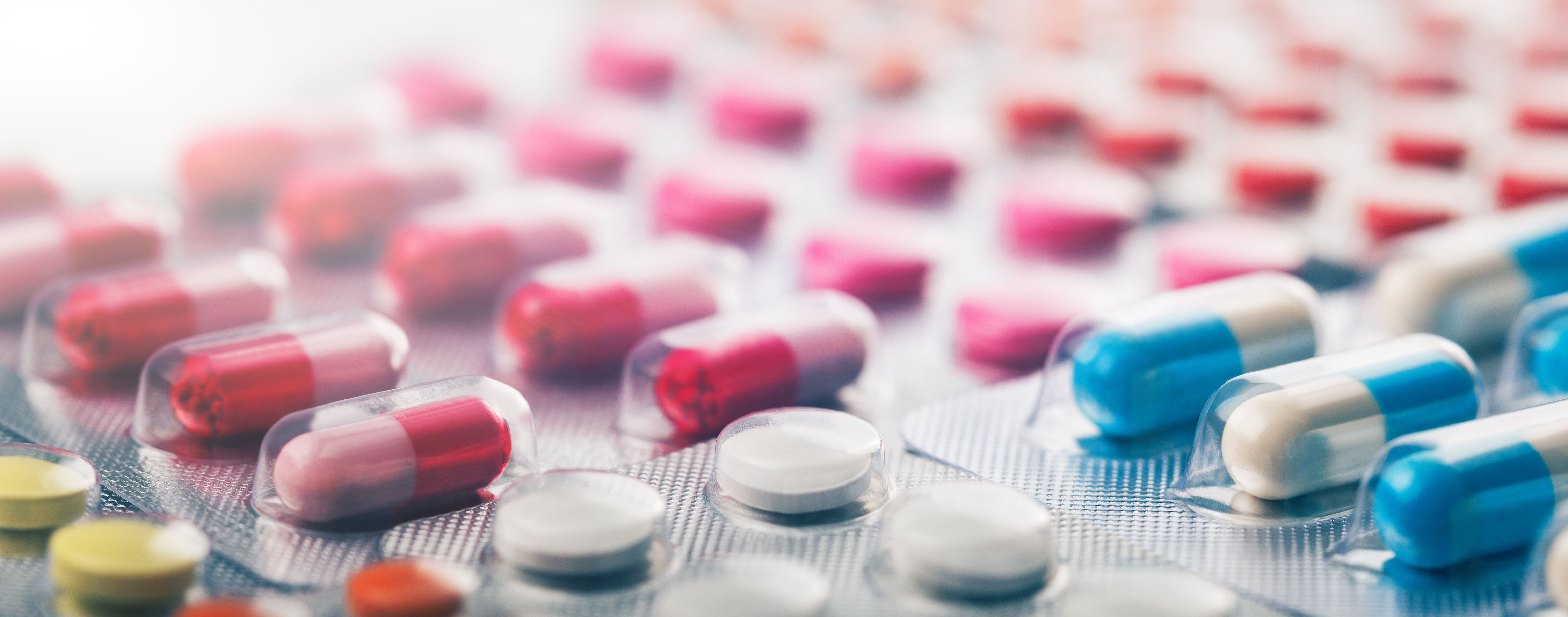Raman Spectroscopy: Recent Advancements in Pharmaceutical Analysis
An overview of Raman spectroscopy and its applications in pharmaceutical analysis is presented.
Raman spectroscopy is a powerful analytical tool that has become an increasingly significant technique in pharmaceutical analysis. In a recent review published in the Journal of Molecular Structure, Tejas M. Dhameliya from L. M. College of Pharmacy in India and others discuss the recent advancements in Raman spectroscopy and its wide range of applications in pharmaceutical analysis, including herbal medicines, illicit drugs, and pharmaceutical formulations (1).
Heap of medical pills in white, blue and other colors. Pills in plastic package. Panoramic banner for design. | Image Credit: © okskaz - stock.adobe.com

Raman spectroscopy has had a long history. The technique was discovered by Chandrasekhara Venkata Raman back in 1928 (hence the name) (1). For his discover, Raman was awarded the Nobel Prize in Physics in 1930 (1). Over the course of the last 90 years, Raman spectroscopy has become one of the most popular, applicable, and important analytical techniques. It has especially been valuable for determining counterfeit drugs, raw materials, excipients, and active pharmaceutical ingredients (APIs) (1). It is a nondestructive, quick, feasible, and accurate technique for detailed fingerprinting, making it an essential tool in pharmaceutical analysis (1).
Raman spectroscopy, as a technique, has several distinct advantages. One of these advantages is that the technique is insensitive to water molecules (1). This attribute makes the technique superior to other methods in detecting various drugs in drug delivery systems. Additionally, Raman spectroscopy allows for the rapid measurement of vibrational energy states in a contactless and non-destructive manner, making it an attractive technique for biomedical and pharmaceutical analysis (1).
According to the review, recent advancements in Raman spectroscopy have led to its expanded applications in pharmaceutical analysis (1). For instance, it can be used for the identification of APIs, the detection of counterfeit drugs, and the study of drug–polymer interactions (1). Raman spectroscopy has also shown potential in the analysis of herbal medicines and illicit drugs, providing accurate and reliable data for these applications (1).
In conclusion, Raman spectroscopy has come a long way since the technique was coined. It has proven to be an essential tool in pharmaceutical analysis because of its various advantages, recent advancements, and expanded applications. This review by Tejas M. Dhameliya provides valuable insight into the recent developments of Raman spectroscopy in pharmaceutical analysis and highlights its continued importance in this field (1).
Reference
(1) Shah, K. C.; Shah, M. B.; Solanki, S. J.; Makwana, V. D.; Sureja, D. K.; Gajjar, A. K.; Bodiwala, K. B.; Dhameliya, T. M. Recent advancements and applications of Raman spectroscopy in pharmaceutical analysis. J. Mol. Struct. 2023, 1278, 134914. DOI: 10.1016/j.molstruc.2023.134914
AI-Powered SERS Spectroscopy Breakthrough Boosts Safety of Medicinal Food Products
April 16th 2025A new deep learning-enhanced spectroscopic platform—SERSome—developed by researchers in China and Finland, identifies medicinal and edible homologs (MEHs) with 98% accuracy. This innovation could revolutionize safety and quality control in the growing MEH market.
New Raman Spectroscopy Method Enhances Real-Time Monitoring Across Fermentation Processes
April 15th 2025Researchers at Delft University of Technology have developed a novel method using single compound spectra to enhance the transferability and accuracy of Raman spectroscopy models for real-time fermentation monitoring.
Nanometer-Scale Studies Using Tip Enhanced Raman Spectroscopy
February 8th 2013Volker Deckert, the winner of the 2013 Charles Mann Award, is advancing the use of tip enhanced Raman spectroscopy (TERS) to push the lateral resolution of vibrational spectroscopy well below the Abbe limit, to achieve single-molecule sensitivity. Because the tip can be moved with sub-nanometer precision, structural information with unmatched spatial resolution can be achieved without the need of specific labels.